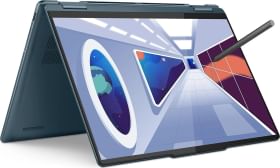Google Maps has mapped millions of kilometers in India, including urban and rural roads and over 300 million buildings. The navigation service helps millions of users daily, whether driving to the nearest mall or the other side of the city, commuting from their office, or taking a road trip. Google Maps caters to over 50 million searches daily and helps people with over 2.5 billion kilometers of directions. Now, the service is utilizing AI to unlock new, India-first features.
Google Maps’ Address Descriptors Feature To Help Users Discover A Location’s Neighbourhood

The first new feature in Indian Google Maps is Address Descriptors, which helps users understand addresses better “in a way they are used to in real life.” In its blog, Google mentions how dropping a location pin on the navigation app and sharing it with family and friends is common in India. To improve the address-sharing experience, Google Maps will automatically find “up to five of the most relevant landmarks and area names” around the pinned address.
Address Descriptors make sense, especially since they can help people locate a familiar neighborhood or area near the destination they are headed to, which helps in deciding the route and increases awareness about the area. This could include locations like a bank, school, post office, hospital, a famous local market, mall, etc. Early next year, users can see this feature in Google Maps as “Nearby Landmarks” under the main address.
Google Lens For Maps Will Help Users With AR-Based Instructions

Besides Address Descriptors, Google Maps integrates Google Lens into the navigation experience. With the help of Google’s image recognition technology and a vast library of location-based data, users should be able to point their cameras on the street and immediately see a list of nearby locations, such as cafes, restaurants, restrooms, etc. The feature, Lens in Maps, will launch in 15 Indian cities by January 2024.
This particular integration should be quite useful, especially for users who are traveling and visiting a city/place for the first time, unfamiliar with what the street or the locality is called. In other words, it is an image-based navigation option. Interestingly, the demo video for this feature (posted on Google’s blog) looks like it’s from a sci-fi movie, where the app recognizes everything, from the road the person is standing on to the nearby locations (shown via augmented reality).
Live View For Walking, Fuel-Efficient Routes, And More

The third feature on Google Maps for India is Live View for walking navigation. With this, users will see arrows, directions, and distance markers overlaid on the Maps screen on their smartphone, helping them figure out which way is right and the distance they have to walk before they arrive at their location. “Live View walking navigation is coming to over 3,000 cities and towns in India, starting with Android.” The feature relies on Google’s Street View imagery and advanced AI and AR technologies.
By January next year, users should be able to access fuel-efficient routing on Google Maps. This feature helps those with vehicles with sustainable routes. The feature applies AI to understand real-time traffic details, including road elevation and vehicle engine type, to identify the route that minimizes fuel consumption and, subsequently, carbon emission.
Where Is My Train App To Include Mumbai And Kolkata Local Trains’ Details

Last but not least, Google’s Where Is My Train app will now cover Mumbai and Kolkata Local Trains. As a result, users in these cities should be able to track the next local train, how far it is from a terminal, and how long it will take to reach the required station. Further, the Alphabet-owned company has also partnered with Namma Yatri, a mobility app on ONDC, which will help users see metro schedules and organize their bookings in one place.
Moreover, the new Google Maps feature is promising. However, a curious mind also wonders whether these features will make up for a great navigation app for an AR/VR headset. Google is already using AR for most of the new Maps features, and if the virtual elements are laid on a pair of VR glasses instead of a smartphone screen, it will be more convenient and innovative. Nonetheless, the new Google Maps features should be available to Android users starting January 2024.
You can follow Smartprix on Twitter, Facebook, Instagram, and Google News. Visit smartprix.com for the most recent news, reviews, and tech guides.






























